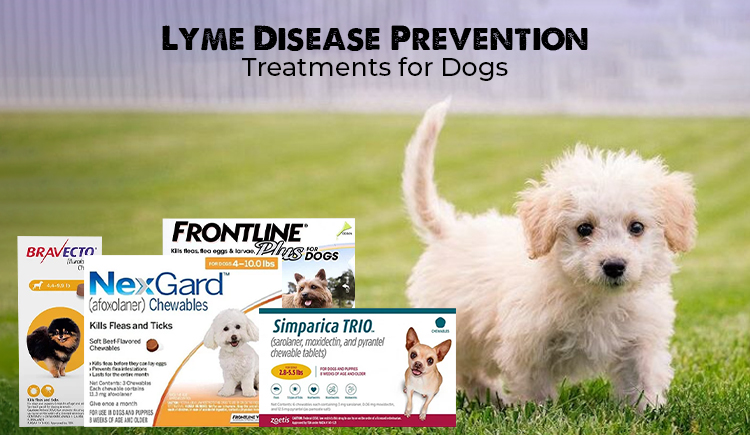Tick prevention is one of the important aspects of pet parenting. Ticks not only bite and irritate your pets but also transmit deadly diseases like Lyme disease. Lyme disease is commonly diagnosed in dogs in the United States, and so, we thought it might be a good idea to share some information on Lyme disease prevention for your dog.
What is Lyme disease in Dogs & how it affects them
Lyme disease is a tick-borne disease caused by a bacterium known as Borrelia Burgdorferi. This bacterium is transmitted to dogs through a bite of an infected black-legged tick (deer tick). These types of ticks are active year-round, even in the freezing winters, making the prevention of the disease crucial year-round.
Ticks pass the bacteria to dogs when feeding on their blood. Once an infected tick bites the dog and B. burgdorferi enters the bloodstream, it can affect many parts of the body, but the major effects are seen on the joints and kidneys. If left untreated, the disease can also affect the heart, brain, and nervous system of dogs, leading to seizures and facial paralysis.
Read More : Lyme Disease In Dogs: Treatment, Prevention and Care
Infected dogs may show these symptoms of Lyme disease:
- Fever
- Limping
- Lethargy
- Swollen lymph nodes
- Painful lameness
- Joint stiffness
- Kidney problems
Most infected dogs take up to two to five months to show any notable Lyme disease symptoms. Hence, by the time the disease is detected, the damage may be done already. Now, since waiting for the onset of symptoms is not a good idea, the best way to prevent Lyme disease is to prevent ticks in the first place. This can be done by using a suitable dog tick prevention treatment.
Lyme disease prevention – Products to consider
Tick prevention is the key to preventing Lyme disease in dogs. There are several flea and tick treatments available in the market proven to kill Lyme disease-causing ticks. Here are the preventatives that we recommend administering consistently for continuous tick control:
NexGard
Nexgard is an FDA-approved oral treatment to prevent Lyme disease infections in dogs by killing black-legged ticks quickly. It comes in a delicious beef flavored chewable that is easily accepted by dogs. Nexgard chews also treat and control Lone Star ticks, American dog ticks, brown dog ticks, and fleas. Choose Nexgard to save your dog from persistent itchiness to potentially life-threatening Lyme disease.
Frontline Plus
Frontline Plus is the best flea and tick spot-on treatment for dogs. Trusted by millions of dog parents around the world, this easy-to-use topical treatment is highly effective in killing fleas, flea eggs, chewing lice, and ticks, including the one that transmit Lyme disease. Frontline Plus should be used on dogs and puppies year-round for the prevention of Lyme disease as well as other tick-borne diseases.
Simparica Trio
Simparica Trio is another FDA-approved indication for the prevention of Borrelia burgdorferi in dogs. The Zoetis product is a once-a-month chewable that blocks infections that may cause Lyme disease by killing deer ticks. Moreover, this three-ingredient formulation is also effective in protecting dogs from fleas, as well as internal parasites like heartworms, and intestinal worms like roundworms and hookworms.
Bravecto
Bravecto is also a monthly oral treatment for the prevention of fleas and ticks in dogs. It comes in a delicious beef-flavored chew that kills Black-legged ticks for 3 months. A single Bravecto chew also treats and controls fleas, American dog ticks, Brown dog ticks and Lone star ticks. Furthermore, Bravecto is a fast-acting formula and is proven to kill almost 98% of ticks within 12 hours of administration.
>>>>Click here for Bravecto<<<<
Prevention is the Protection…
The best possible way to prevent Lyme disease and the nuisance of ticks is to keep your dog up to date on flea and tick prevention treatments that cover Lyme disease-causing ticks. Consult your veterinarian for more information on Lyme disease prevention in dogs.

